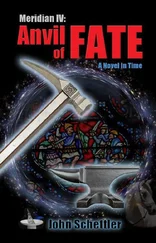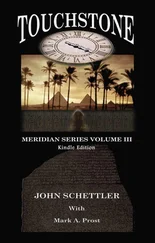Against them came Salah ad Din, with all his host. The warriors of Islam answered the call of jihad at last. There were scores of Mamlukes with their brightly colored garb and gleaming scimitars. Bedouin fighters drifted in from the deserts, riding camels and braying horns on the wind. Ghulam cavalry rode with tall Amirs, proud and haughty in the saddle. Swarthy Turks and Kurds thronged from the east, and down from Aleppo came Taki ad Din with a host of twenty thousand Saracen horsemen, veterans of many battles.
In the face of all this commotion and turmoil, the Sami’s own personal fate seemed a small thing to him. The day of reckoning would soon be at hand. He hoped he would live to see it, and continue on in the service of his master. Yet there were some things he could not set aside, and his honor and pride demanded a death in place of the charge he had allowed himself to despoil. The Wolf had escaped him, but the infidel would die in his stead.
Kelly wasted little timegetting a focused data search set up for Maeve. He would begin on the first offending year, starting in January, and have the system run detailed comparisons of all matching data files from the two banks. Maeve worked on the keyword set, compiling a list of every important subject she could think of. She followed her hunch and focused on the conflict between the West and the Muslim world where the two cultures had been grating against one another for nearly a century in Palestine. Her list culled the obvious keywords to spearhead the data search: Crusades, Palestine, Outremer, Islam. She also threw in all the names of Christian and Muslim Lords from the period, major principalities and cities in the region and a few associated subject areas like castles, trade, relics and shrines.
“What am I leaving out?” she said aloud. “Ah, how about the Assassins? They were probably causing a little trouble in the region.”
“Who were they?” Kelly looked over his shoulder as she finished.
“A nasty little cult that was hiding out in the highlands of northern Syria,” she explained. “They finagled their way into a few decent castles and used them as outposts and training centers for their corps of secret operatives. A bit like Osama bin Ladin and his terrorist training camps in Afghanistan.”
“You mean they were terrorists?”
“In a manner of speaking. They were few in number, but used subterfuge, sleight of hand and threat of assassination to exert influence on both the Christian and Muslim lords in the region. In fact, the word Assassin, as it’s used in the West today, dates from this period. Here, let me show you.” She keyed the word and ordered an origins search to get a number of reference links immediately.
“See here,” she pointed reading aloud: “For 800 years, the sect has been largely shrouded in mystery and still is glimpsed through a mist of rumors, charges and speculations. But it is known that the word assassin, still used to describe a political murderer, was applied to members of the sect…” She selected a second reference and read it aloud.
“The origin of the organization’s name is unclear. Maalouf follows a number of Ismaili sources in affirming that ‘assassin’ is derived from the Arabic assass (foundation), via assassiyun (fundamentalists); they were simply believers in a purer and more basic form of Islam. A more highly-colored derivation, favored by Western writers, points to the Arabic hashshashin (eaters of hashish) to explain both the name of the Assassins and their fanatical devotion to their leader, the Old Man of the Mountain, as their sanguinary tactics were fueled by narcotics.” (1)
“How strange,” said Kelly. “Bin Ladin’s group, Al Qaeda, was also supposed to mean ‘the base’ in Arabic, and I ran across references associating the word for ‘foundation’ as well.
“Birds of a feather,” said Maeve. “I guess these Islamic fundamentalists all tend to think alike.”
“Well,” said Kelly, “we had better get the comparison run going. I’ll have the system flag any data that has a variance rating of .05 or higher—that was my threshold for yellow on the color bar. It will extract any dating information on the reference materials and we’ll do a scan by month beginning with 1187.”
He had the job ready to run a moment later, and Maeve watched while the familiar green line started across her screen, month by month. All was well until late in June when the solid green line suddenly changed to yellow near the end of the month.
“Bingo!” she chimed. “We get our first deviations in June of 1187, just as I thought. The Battle of Hattin was in early July, right on the 4 thor so. Seems history has a thing for that week: the Declaration of Independence and the end of the battle of Gettysburg, to name a few choice moments in our own affairs. Let’s see what’s wrong. You better pull up a chair and help me out. I’ve already got over a hundred files that show alteration.”
Kelly settled in next to her, and they began to work down the list. The system was designed to display red text for any word in a file that did not exactly match the corresponding text from the primary data, the signature files that Kelly had stored in the RAM bank last month. They were getting little things at first: changes in grammar, sentence structure and choice of words in the documents, but no real alteration of key facts. A half hour passed like this, and Kelly began to get frustrated.
“This is going to take forever,” he breathed. “Here, I’m going to ask the system for data flagged with greater deviation values. Just for yucks, I’ll query for outright anomalies.” He entered a few commands and squinted at the screen.
“Here we go,” he smiled as he read aloud. “Archeologists unearth strange find in hidden archive. It’s a newspaper article. How’s that for a headline?”
“What was it?” Maeve asked as she paged through a file on her terminal.
“That’s odd,” said Kelly. “Hey it came up under that last keyword you threw in, the Assassins. Listen to this: ‘A team of Harvard based scientists rushed to the site near a ruined medieval castle in Syria today as construction crews working on a restoration project for the Aga Khan Foundation unearthed a hidden vault in a cave near Masyaf. A sealed iron strongbox there contained a number of items, most significantly, a copy of the Holy Koran, believed to be well over a thousand years old. That in itself would make the typical historian’s day, but an odd find, hidden behind a sealed leaf of the volume, had researchers quite perplexed. It was a portion of a laminated playing card from a typical modern deck—the King of Diamonds, to be precise.”
Maeve gave him a frown. “We’ve got to hit the event data harder than that, Kelly. Come on, will you?”
“Well this file had a super high anomaly rating,” said Kelly. “Sure, it sounds ludicrous. It probably migrated down from the construction crews—a typical example of site contamination.” He glanced at a few more lines of the article and saw something that jarred him. “Workers at the site insist the box had remained locked and undisturbed before the researchers arrived. ’We have no idea how a thing like this could be authentic,’ said Professor Sims of the Harvard-MIT institute, ‘unless, of course, the occupants of this library were fond of playing poker or bridge in their spare time.’ The site was the location of the nefarious group known as the Assassins, a cult of fanatical fundamentalists who terrorized both Muslim and Christian interests alike during the twelfth century, AD. ” They even have a picture on file—” Kelly cut himself off, leaning forward suddenly to squint at the screen. “It can’t be…”
Читать дальше












